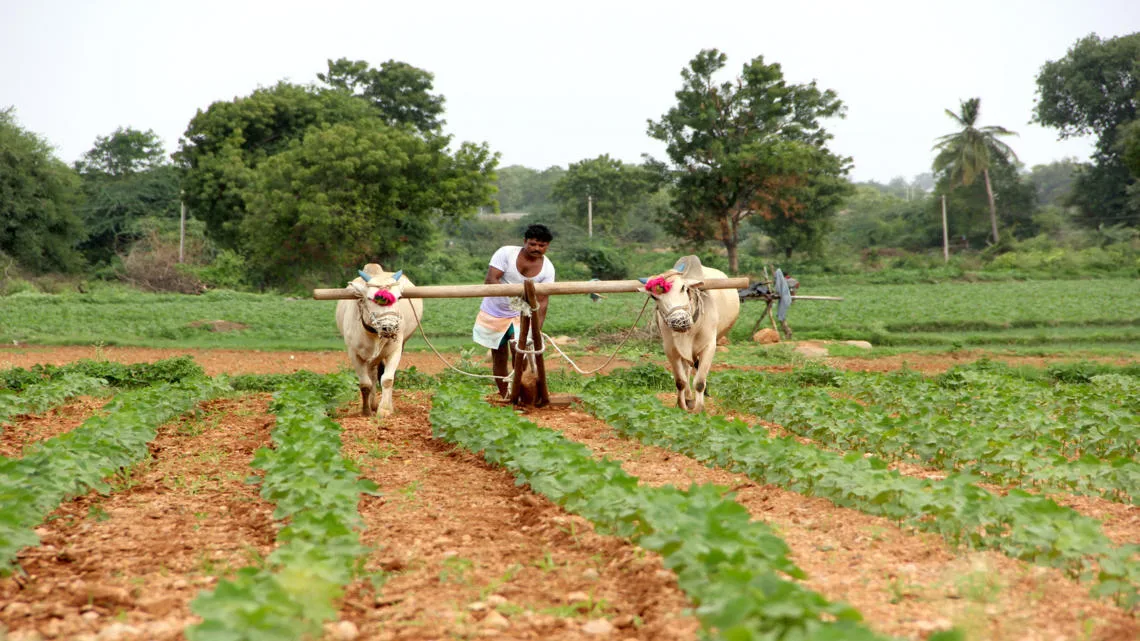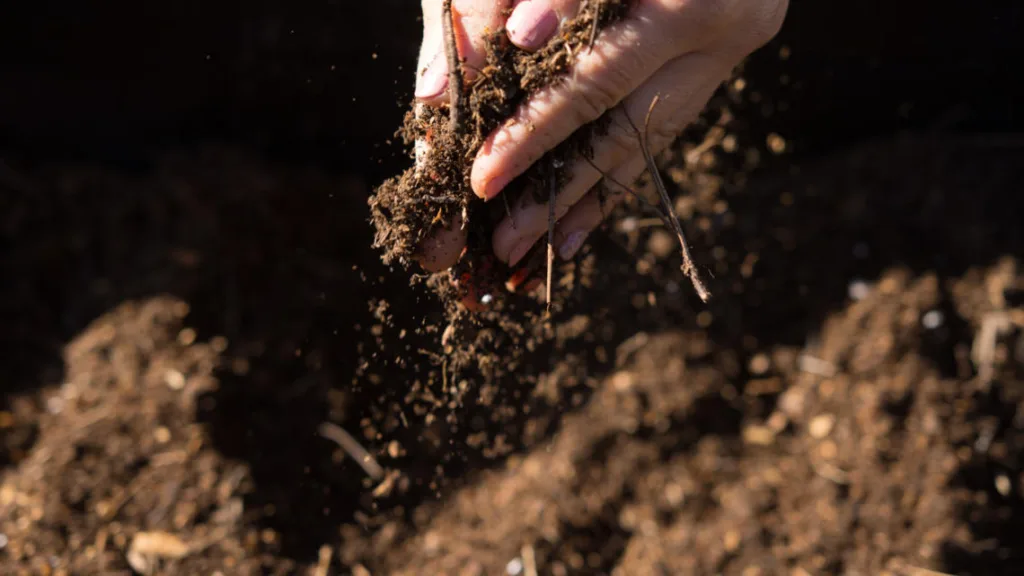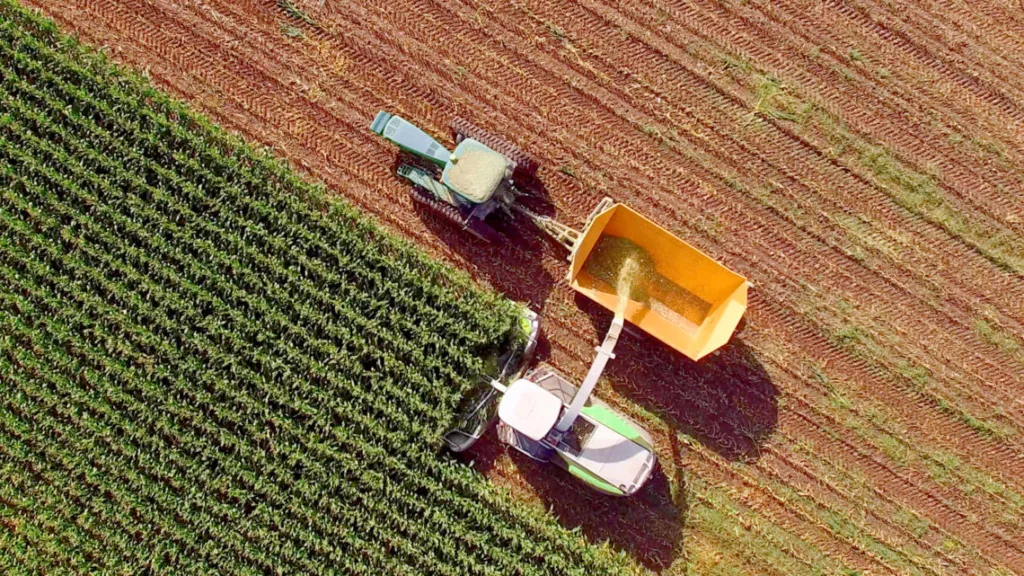Authors
Deepa Maggo
Smallholder farmers are a crucial part of the food value chain in India, as well as a critical element of the global food system. The COVID-19 pandemic has brought new risks that threaten livelihoods as well as food security.
To mobilize business leadership to mitigate these risks, and as part of its COVID-19 Response Program, WBCSD has launched a Vital Supply Chains Project focusing on Food Systems Security. For India, several key questions arise: What do the challenges faced by smallholders mean for our food system, and the leading businesses in the sector? How can you ensure hand hygiene when water is scarce? How can social distancing be practiced when you have no choice but to work outside every day?
India is home to about 120 million smallholder farmers who contribute over 40% of the country’s grain production, and over half of its fruits, vegetables, oilseeds and other crops. Much of the global share of food staples such as rice and wheat come from India, and almost half of the population in India depends on agriculture for their livelihood.
Every year, Indian farmers face risks such as low rainfall, price volatility and rising debts. But risks from the COVID-19 pandemic are putting new challenges in front of a sector that is already under threat.
The nationwide lockdown came at an unfortunate time for farmers, as it was the harvest season for the rabi (winter) crop. The lockdown created both a shortage of labor and equipment – migrant laborers in India usually move to rural areas during harvest, and smallholder farmers often rent harvesting equipment as this is cheaper than purchasing it.
Consequently, farmers have not been able to harvest their bumper crops of cereal and oilseed harvest this season. In some places the crops have been abandoned, while in others the harvest is coming more than a month late, in hand with limited and more expense labor.
In addition, it was estimated that although India’s food bank had more than three times the minimum operational buffer in stock, supply and access is a critical issue. Long supply chains have been severely affected, especially at the beginning of the lockdown when transport was restricted. Drivers abandoned trucks full of produce in the middle of interstate highways. Markets eventually started running short of supplies, owing to food rotting in transit or never making it to point of sale.
ITC’s Agribusiness team has been responding to the situation by using its digital advisory application “e-choupal” to procure produce. E-choupal provides information to farmers about market demand of their produce, market prices etc. to allow them to make well-informed decisions and fetch competitive prices in the markets.
In these challenging times, when regular transport and markets have not been functioning, ITC utilized their already existing e-choupal infrastructure and network to procure farm produce directly from farmer locations, and introduced supply chain interventions like multi- point rake movements, and coastal container movements to ensure uninterrupted movement of produce.
In the first few days of the lockdown, consumers resorted to panic buying and hoarding essentials such as flour, rice, sugar and oil. Prices of sugar rose in cities where supplies were limited and fell in other places due to over-supply. Gradually, with logistical restrictions, markets fell short of supplies and the prices of these commodities increased. But the farmgate prices of fruit, vegetables, milk, meat and poultry in India have crashed because of lower demand.
Another issue that is cause for concern is the availability and access to seeds, fertilizers and pesticides for the next crop season. Post the rabi harvest in April, farmers prepare for the next (kharif) season in May. However, the COVID-19 induced disruptions have reduced production capacity for farm inputs and have led to an increase in price, making these resources inaccessible to smallholder and marginal farmers in the country.
While large landholding farmers and businesses may be able to weather these shocks, they put enormous pressure on smallholders who work with limited resources and income. Resuming business operations will be key to ensuring harvest security in the coming season.
We have seen several businesses such as Yara International stepping up to support the sector. Yara International worked with the local government authorities in India, their vendors, suppliers and transporters to resume operations albeit at low capacity. Their operations are critical for supplying seeds and inputs to farmers for the next cropping season, and their liaison efforts with their key stakeholders helped instill confidence to resume operations along the input supply chain.
Other businesses have a good track record of helping cash-strapped farmers reduce their vulnerability to both endemic and pandemic risks, by making credit easily available to them. For example, Natems, an Indian firm in the sugar sector, has made approximately USD $500,000 available to 3000 smallholders in the last four years in the catchment of their operations.
The COVID-19 crisis is not permanent, but it has magnified the vulnerabilities already present in the food system in India. Taking stock of the issues can help governments and businesses create stronger, more resilient supply chains and measures to support smallholder farmers, who are critical to the food supply chain.
An impending healthcare crisis in rural India
The pandemic has also highlighted the potential public health crisis awaiting rural India and farming communities.
Basic preventive measures such as regular handwashing, social distancing and self-isolation pose a unique challenge for rural communities. In a country which is already water-scarce, and where there is irregular water supply in many areas both rural and urban, repeated handwashing is a luxury that cannot be put into practice.
In addition, social distancing and isolation are a huge challenge for farming communities who rely on daily labor and wages for their subsistence.
As we adjust to a new normal and “business as unusual”, it is imperative for a predominantly agrarian country like India to leverage the lessons from the pandemic and the severe impacts it has had on the farming community.
The key lessons are:
- Long food supply chains involving multiple stakeholders and entities are clearly vulnerable to shocks such as the pandemic. Mapping and optimizing supply chains will be key for future resilience.
- Building a resilient food system is not about production, but also about ensuring access to nutritious food to people in times of crisis.
- Smallholder farmers are highly vulnerable to crisis as a result of their limited access to resources, credit and basic healthcare facilities. Measures will need to be taken by governments and businesses to protect the community.
Some of the issues highlighted above need urgent attention since they have medium to long term implications on India’s food system. Also, the effects could add up to impact the global food system although it seems for now that the global food system is coping well with the crisis through swapping sources and rerouting supplies.
The threat of the coronavirus for India is far from over, but the leaders realize the need for the economy to start functioning. Yet, it is now understood that business-as-usual is a thing of the past.
As we build the “new normal”, we will need to be innovative in our thinking, and ensure that our efforts to rebuild are sensitive to the needs and circumstances of smallholder farmers. In this way we can protect and support the resilience of the local food supply, while also taking steps to ensure future systemic shocks can be handled quickly and effectively.
WBCSD news articles and insights may be republished in accordance with the Creative Commons Attribution-NonCommercial-NoDerivatives 4.0 International Public License, and in accordance with our Privacy Policy. All Content must be featured with due credits.




